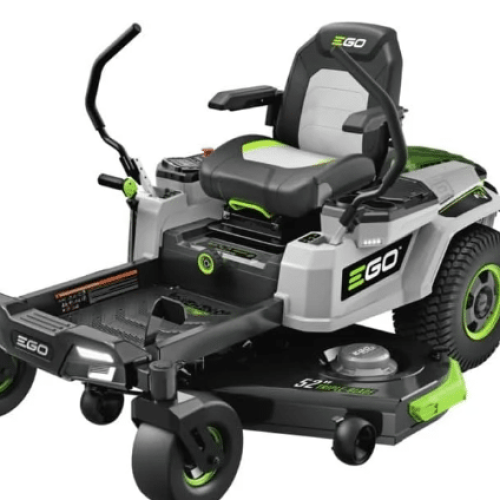Hey guys its JV Charles. I love being a home cook and gardener. Harvesting fresh, vibrant microgreens is a joy. But, I’ve seen them go bad quickly. That’s why I’m sharing tips to keep them fresh and tasty. I think this will step your game up. LOL
Learning to store microgreens right saves time and money. It also prevents the disappointment of bad produce. By keeping them fresh, we get more nutrition and flavor. Plus, we use fewer growing trays, making gardening better for the planet.
Key Takeaways
- Proper storage techniques can preserve the freshness, flavor, and nutritional value of microgreens.
- Storing microgreens correctly can extend their shelf life and reduce food waste.
- Following best practices for temperature, humidity, and air flow can keep microgreens crisp and vibrant.
- Gentle handling during harvest and storage is crucial for maximizing shelf life.
- Choosing the right storage containers and monitoring for moisture issues can help prevent spoilage.
Why Proper Storage is Crucial
Storing microgreens right is key to keeping their nutritional value and flavor. Many types, like pea shoots, can last up to three weeks. Most common microgreens stay fresh for 14 days. Proper storage lets you extend their shelf life and reduce food waste, saving you money.
Preserving Nutritional Value and Flavor
Microgreens are full of vitamins, minerals, and antioxidants. Keeping them stored right is vital to keep these nutrients and their great taste. With the right storage, you can enjoy all the benefits these tiny greens offer.
Extending Shelf Life and Reducing Waste
Knowing the best way to store microgreens can extend their shelf life. This means you get to enjoy their freshness longer and reduce microgreen waste. Learning how to store them right saves time, money, and the hassle of bad produce.
“Proper storage of microgreens is the key to unlocking their full potential and enjoying their unparalleled flavors and nutritional benefits for as long as possible.”
Factors Affecting Microgreen Freshness
Keeping microgreens fresh is key to their great taste, nutrition, and long shelf life. Many factors affect their freshness. Knowing these is vital for keeping microgreens in top shape.
Internal and External Moisture
Microgreens need the right balance of moisture inside and out. Too much moisture outside can cause mold and bacteria. Not enough moisture can make them wilt and lose their crispness. Harvesting and storing them right is crucial for keeping moisture levels right and keeping them fresh.
Cutting and Handling Techniques
How you cut and handle microgreens affects how long they last. Cutting with a sharp knife or scissors gives a clean cut that helps prevent damage and oxidation. This keeps them fresh longer. It’s also important to handle them gently to avoid bruising or tearing them. Easy does it.
Container Choice and Air Flow
The container you use and the air flow around it are key to keeping microgreens fresh. Containers that breathe well and keep moisture out help prevent mold. They also let air in to keep the greens fresh. Picking the right container and making sure there’s enough air flow is key to keeping microgreens at their best.
| Factor | Impact on Microgreen Freshness | Recommended Practices |
|---|---|---|
| Internal and External Moisture | Excess external moisture can lead to mold and bacterial growth, while insufficient internal moisture can cause wilting and loss of texture. | Maintain a delicate balance of internal and external moisture through proper harvesting and storage techniques. |
| Cutting and Handling Techniques | Using a sharp knife or scissors results in a clean cut that minimizes damage and oxidation, preserving the greens’ freshness. | Employ gentle handling techniques to avoid excessive bruising or tearing, which can compromise the microgreens’ shelf life. |
| Container Choice and Air Flow | The type of container and air flow within and around it can impact moisture levels and promote or inhibit the greens’ longevity. | Select breathable, moisture-resistant containers that allow for proper air circulation to prevent the buildup of excess moisture and extend the freshness of microgreens. |
By understanding these key factors and following best practices, you can keep your microgreens fresh, crisp, and full of flavor. This ensures they stay great from storage to handling.
Preparing Microgreens for Storage
Getting microgreens ready for storage is key to keeping them fresh. It’s important to harvest at the right time and wash and dry them well before storing.
Timing the Harvest
Harvest microgreens 12-24 hours after watering. This lets them soak up moisture inside without getting too wet. Microgreens are usually ready when they grow to 1-3 inches tall.
Washing and Drying Methods
After picking, wash the microgreens in cold water to get rid of dirt. This step stops mold and bacteria from growing in storage. Then, dry them well to remove any leftover moisture. Using paper towels or a salad spinner works great for this.
Good microgreen harvesting, microgreen washing, and microgreen drying methods keep your microgreens fresh and crisp in storage.
“Microgreens can last from one to two whole weeks (or even longer in some cases) when stored properly, emphasizing the importance of proper storage techniques.”-JV Charles
| Microgreen Variety | Growth Period | Harvest Height |
|---|---|---|
| Wheatgrass | 7-10 days | 2-3 inches |
| Radish | 10-14 days | 1-2 inches |
| Kale | 12-16 days | 2-3 inches |
By timing the harvest and washing and drying the microgreens before storing, you keep them fresh, tasty, and full of nutrients for a longer time.
how to store microgreens
Keeping microgreens fresh is key to enjoying their flavor and nutrients. The right balance of air flow and humidity is crucial. Choosing the right containers helps keep our microgreen harvests fresh for longer.
Choosing the Right Container
Use glass bowls or airtight plastic containers for storing microgreens. These keep humidity levels right and allow air to move. Don’t use sealed bags or containers that block all air, as this can cause moisture and spoilage.
Adding a clean paper towel at the bottom of the container helps too. It absorbs extra moisture, keeping the microgreens from getting too wet.
Managing Air Flow and Humidity
Good air flow keeps microgreens crisp and fresh. Too much moisture can make them rot, while too little can dry them out. Finding the right balance is key.
Store your microgreens in the fridge for a cool, humid place. Make sure there’s enough space for air to move around the container. Don’t pack them too tightly, as this can block air flow and increase moisture.
Check on your microgreens often and adjust as needed. If you see condensation, remove the paper towel for better air flow. If they seem dry, add a dampened paper towel to keep humidity up.
By picking the right containers and controlling air flow and humidity, you can keep microgreens fresh for up to a week. This way, you can fully enjoy their nutritional benefits.
Optimal Storage Temperature
Keeping the right storage temperature is key to keeping your microgreens fresh. The best fridge temperature for microgreens is 35-40°F (2-4°C). This cool space slows down bacteria growth and keeps your greens crisp and tasty for more time.
Refrigerator Placement and Settings
The bottom shelf of the fridge is perfect for storing microgreens. It’s the coolest spot, keeping your greens at the right temperature. Don’t put them in the vegetable drawer, as it can get too humid. This can cause mold and make them spoil faster.
To get the fridge at the right temperature for microgreens, use a thermometer. Keep it between 35-40°F (2-4°C) for the best results. Adjust your fridge settings if needed to keep your microgreens fresh and full of nutrients.
| Microgreen Storage Temperature | Ideal Refrigerator Placement | Potential Issues |
|---|---|---|
| 35-40°F (2-4°C) | Bottom shelf of the refrigerator | Avoid vegetable drawer due to higher humidity |
Follow these tips for the best storage temperature and fridge placement. This way, you can enjoy your microgreens for longer and get the most out of their fresh, nutritious goodness.
Maximizing Shelf Life
To keep your microgreens fresh and tasty, focus on two key things: watch for condensation and keep them away from light. These steps can help your microgreen harvest last longer. They have worked wonders for me!
Monitoring for Condensation
Too much moisture can harm your microgreens, leading to mold and bacteria. Check your storage containers for condensation often. If you see moisture, adjust the temperature or use a paper towel to dry it out. Keeping the right moisture level is crucial for keeping microgreens fresh.
Avoiding Light Exposure
Microgreens are fragile and light can make them spoil quickly. Store them in a cool, dark spot, like the fridge’s bottom shelf. This keeps their color bright, texture crisp, and taste fresh for longer.
By watching for condensation and keeping them out of the light, your microgreens will stay fresh and tasty. This reduces waste and lets you enjoy these healthy greens more.
Troubleshooting Common Issues
Even with the best efforts, microgreens can sometimes spoil, turn color, or wilt. It’s important to fix these problems quickly to keep them fresh. By watching our microgreens closely and adjusting their storage, we can solve common issues.
Pests and Pathogen Control
Microgreens can attract pests like moths and fungus gnats. Moths can cause big problems if not stopped. Fungus gnats like damp places and need good airflow and watering to avoid them. To fight pests, we can use predators or bug zappers. Homemade mixes like baking soda and hydrogen peroxide also work well.
Maintaining Freshness and Preventing Spoilage
Handling microgreens right after they’re picked is crucial for keeping them fresh. Picking them at their best, drying them, and storing them in the fridge can keep them fresh for three weeks. The right watering is also key, once a day if not in the fridge, and every two to three days if stored there.
Troubleshooting Discoloration and Wilting
Microgreens can turn color or wilt for many reasons. Drying them well after picking and keeping them in containers with dry paper towels helps keep their color and crispness. If problems don’t go away, please contact us by email, phone, or social media. Im here to help you grow great microgreens.
| Microgreen Variety | Seed Count | Weight |
|---|---|---|
| Radish Pink | 170 seeds | 200 gm |
| Pak Choi | 120 seeds | 100 gm |
| Red Cabbage | 330 seeds | 50 gm |
| Radish China Rose | 220 seeds | 200 gm |
| Broccoli | 300 seeds | 50 gm |
| Corn | 160 seeds | 100 gm |
| Turnip Purple Top | 110 seeds | 100 gm |
By watching our microgreens closely and fixing any storage problems quickly, we can keep them fresh and tasty. We’re here to help you every step of the way, so don’t hesitate to ask if you have questions or concerns.
Conclusion
Storing microgreens right keeps them fresh, tasty, and full of nutrients. Knowing how to store them is key. By handling moisture, storage conditions, and temperature right, we can keep these greens fresh for a long time. This way, we can enjoy our homegrown or store-bought microgreens longer and cut down on food waste.
Research shows microgreens are packed with nutrients, sometimes up to 40 times more than regular greens. For example, red cabbage microgreens are loaded with vitamins. Keeping these greens stored properly helps us keep their nutritional value. This means we don’t waste the effort or money we put into growing or buying them.
For gardeners or chefs, knowing how to store microgreens well can greatly improve their quality and shelf life. By keeping up with the latest research and methods, we can keep enjoying the great taste and health benefits of these small but mighty plants. Proper storage is crucial for getting the most out of microgreens.
FAQ
How can proper storage extend the shelf life of microgreens?
Proper storage keeps microgreens fresh for up to 14 days. It’s important to manage moisture, cutting methods, and containers. These steps help keep the greens tasty and crisp.
What are the key factors that affect the freshness of microgreens?
Moisture inside and outside the greens, how you cut and handle them, and the storage container matter a lot. Managing these well keeps microgreens fresh longer.
How should microgreens be prepared for storage?
Harvest at the right time, wash in cold water, and dry them well. These steps control moisture and prevent spoilage.
What are the best ways to store microgreens?
Use containers like glass bowls or airtight plastic ones. Control air flow and humidity. Adding a paper towel helps keep moisture in check.
What is the optimal storage temperature for microgreens?
The best storage temperature is 35-40°F. Keep them on the refrigerator’s bottom shelf for the coolest spot.
How can we maximize the shelf life of stored microgreens?
Watch for condensation and keep them away from light. Adjust the temperature and use a paper towel to manage moisture.
What are some common issues that can arise when storing microgreens, and how can they be addressed?
Spoilage, discoloration, and wilting are common problems. Fix these quickly by changing storage conditions to stop further damage.
Source Links
- https://www.microgreenscorner.com/best-ways-to-store-microgreens-after-harvest/ – The 2 Best Ways to Store Microgreens After Harvest – Microgreens Corner
- https://www.maamgotgreens.com/pages/how-to-keep-your-microgreens-fresh – How to Keep Your Microgreens Fresh!
- https://planthardware.com/store-microgreens-in-fridge/ – How to Store Microgreens After Harvest & Maximize Shelf Life – Plant Hardware
- https://homemicrogreens.com/how-to-store-microgreens/ – How to Store Microgreens to Maximize Shelf Life – Home Microgreens
- https://mpseeds.eu/seeds-storage-solution – Seed Storage Solutions. What are the best practices for storing microgreens seeds? ▶︎ MP SEEDS
- https://naturalyield.com.au/how-to-harvest-and-store-microgreens-for-optimal-freshness/ – Harvesting And Storing Microgreens For Optimal Freshness
- https://microgreensworld.com/how-long-can-you-store-microgreens-at-home/ – Best Ways To Store Microgreens At Home: Duration, Methods
- https://www.vegbed.com/blogs/news/savor-the-flavor-longer-how-to-store-your-microgreens-for-peak-enjoyment – Savor the Flavor Longer: How to Store Your Microgreens for Peak Enjoym
- https://bluecart.com/blog/microgreens-packaging-ideas – How to Store Microgreens: Wholesale Microgreens Packaging
- https://www.securcareselfstorage.com/blog/how-to-store-microgreens/ – How to Store Microgreens – SecurCare Self-Storage Blog
- https://pocketherbs.com.au/how-to-harvest-store-and-use-microgreens – How to harvest, store and use Microgreens
- https://www.vertikit.co.uk/how-to-store-microgreens-after-harvest/ – How to Store Microgreens After Harvest ⋆ VERTIKIT
- https://bloomsandsunshine.com/best-ways-to-store-microgreens/ – Absolute Best Ways to Store Microgreens After Harvest
- https://practicalgrowing.com/microgreens/how-to-store/ – Best Way To Store Microgreens | Practical Growing
- https://ponchacreekgardens.com/2019/04/15/tips-for-storing-microgreens/ – Tips for Storing Microgreens
- https://extension.psu.edu/growing-microgreens – Growing Microgreens
- https://cropking.com/blog/post-harvest-storage-tips – Post-Harvest Storage Tips | Cropking
- https://www.givinggreens.com.au/troubleshooting-microgreens-common-problems-and-solutions/ – Troubleshooting Microgreens: Common Problems and Solutions – Giving Greens
- https://www.allthatgrows.in/blogs/posts/how-to-solve-common-microgreen-problems – How To Solve Common Microgreen Problems?
- https://seedmart.com.au/troubleshooting-microgreen-growing-problems/ – How to Fix Common Microgreen Growing Problems
- https://ingarden.com/blogs/indoor-gardening/what-are-microgreens – What Are Microgreens & How Do They Benefit Your Health?
- https://mpseeds.eu/how-to-prevent-mold-on-microgreens – Guide how to prevent mold on microgreens
- https://www.yeshurunfarm.com/preserving-microgreens-2/ – Preserving Microgreens – YeshurunFarm






